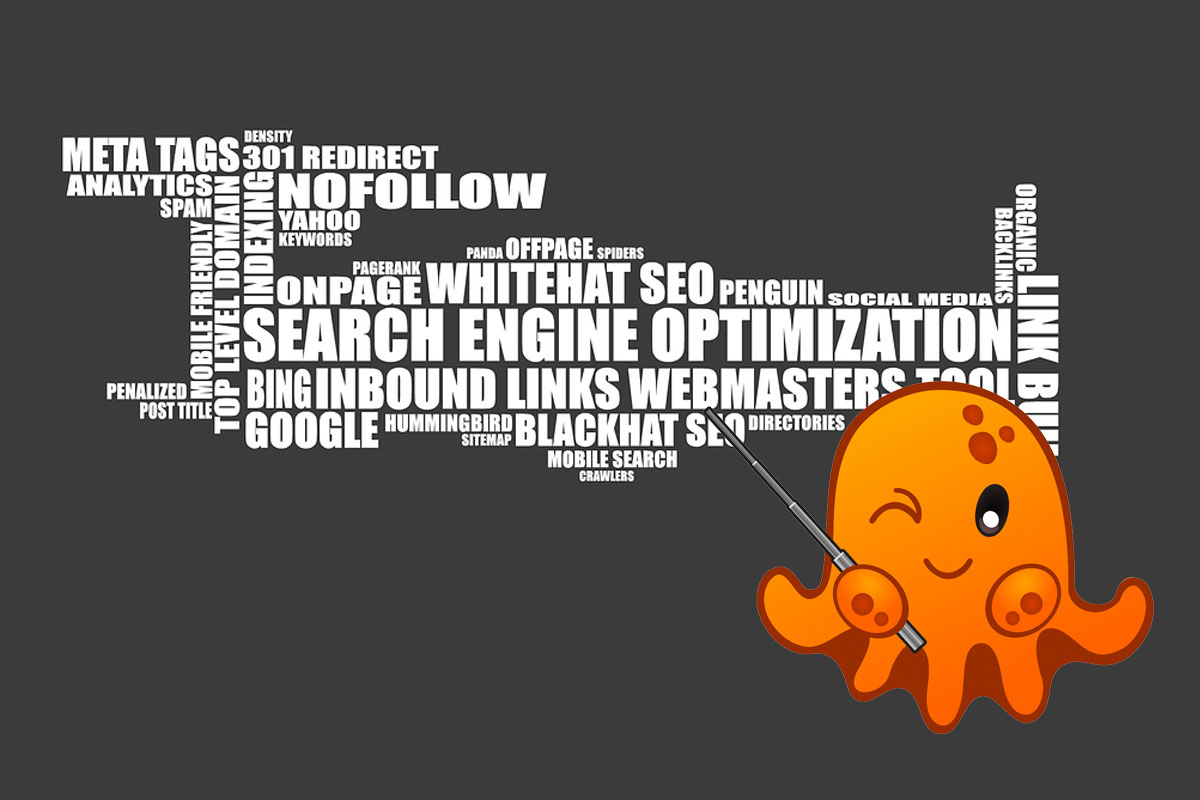You’ve probably heard it before, but I’ll say it again.
Your website ranking matters!
Advanced statistics will tell you that Google’s top search result receives a traffic share of 33%.
The second-ranking generates a 15% traffic share, which begins to decrease as you appear lower on the page.
With trillions of search results being produced each second, it’s very important to rank on the first page of Google to receive the largest share of available traffic to your website.
After all, you may not really have a choice.
67% of all clicks on search engine result pages (SERPs) go to the top five listings.
As a whole, the first SERP receives almost 95% of all web traffic.
This means that if your website isn’t featured in Google’s top five listings, or at least on the very first search engine result page (SERP), your site will likely never be accessed by potential customers.
Fortunately, improving your web ranking can be done with a little hard work and some persistence.
And, it’s also very rewarding.
Increasing your ranking by one or two spots can easily generate thousands of more visitors to your site, which can result in more sales opportunities.
By taking a methodical approach to practicing some effective SEO habits, you can boost your website’s ranking in no time!
Read on for 15 easy steps you can use to improve your site’s web ranking.
1. Build On What Already Works
Your site’s ranking is ultimately based on how relevant search engines believe your site is to web users.
In order to improve your web ranking, you’re going to have to start with your content.
If you notice that your website isn’t ranked where it should be, now’s not the time to throw away your SEO strategy and start from scratch.
Do some research to find out out what’s currently working for others and then try to build on it to replicate the same results.
Here. I’ll show you what I mean.
Let’s say that I wanted to write a blog post for Optuno about web design tips.
I could go on Google, type in a broad search term, and see which article ranks at the top.

Or I can generate some content ideas using BuzzSumo and instantly receive a full list of viral content related to my topic.

Next, I’d pick one of those successful articles and build on it.
There are a few ways I can do this. I can simply make the post longer and add more information and value to it.
For example, the article “10 Highly Effective Web Design Tips Backed by Research” currently ranks at the top of Google’s search rankings for the term “web design tips”.
To build on this article, I can come up with something like, “25 Proven Web Design Tips That Can Lead to More Sales”.
Another way of building on an existing article is to make it more visually appealing.
For example, this post ranks at the top of Google for the search term “digital marketing tips”, mainly because the post looks visually attractive to readers.

Don’t take my word for it.
According to marketing evangelist Brian Dean, taking an article that has proven success and building on it drastically reduces the chance of failure because you’re building from content that clearly works.
Apparently, it’s worked for him.
Using the technique, Dean increased his search traffic by 110%.
2. Communicate With Influencers
An important part of improving your web ranking is by getting a lot of influential people to link back to your website.
Marketing experts will tell you that obtaining these links will happen naturally on its own, but do you truly want to wait on that to happen?
One simple way to gain backlinks is to mention your industry’s influencers in your content.
Naturally, people are much more inclined to share your content on their social media, newsletters, and blogs if they’re mentioned.
And because these influencers typically have large audiences, that means you can receive massive targeted traffic back to your website.
Don’t know how to reach out to influencers in your niche?
No problem, just keep reading.
In 2015, this entrepreneur curated an e-book demonstrating the best posts on Medium.
He then reached out to all of the writers mentioned in the e-book and asked them to spread the word.

A basic email like this could be the difference that makes your content go viral. In fact, you can receive up to an 80% response rate from top industry influencers using an approach like this, according to Blogging Wizard.
3. Use Your High-Ranked Content to Promote Your Low-Ranked Content
Every website has pages on their blog that perform very well in the SERPs and others that aren’t doing so hot.
And, the frustrating thing is that these low-ranked pages may contain some outstanding material.
If only these poor performing pages can get a substantial boost and some backlinks from a more successful blog post.
Oh, wait. They can.
One way to do this is to simply link to low-ranked content in your content that is performing well in search.
For example, HubSpot ranks at the top of the SERPs for the search term “SEO strategy”.

As you can see, they linked to some of their least popular blog articles within this very popular post.
This is an effective way to give some of your low-ranked content the quality boost they need to rise to the top.
4. Write Content That’s Emotionally Appealing
The best kind of content speaks to people’s emotions.
Businesses that are able to successfully connect with their visitors can build a large audience very quickly.
It’s essential to understand your audience’s biggest hopes, fears, motivations, and dreams around the topic which you’re writing.
Once you have a good grasp on what that is, you can embed it into your content to show your target audience that you really understand them.
Close.io, a SaaS product geared towards helping salespeople close more deals, appears to be doing a great job at this.
Of course, many salespeople have a lot of hopes and fears about their job. For example, they may be worried of coming off as “too fake” or “sleazy” to their prospects.

They may also be afraid of getting downright rejected.

Or, they may have no idea what they’re doing.

Because their blog is full of content that speaks tells emotionally captivating stories that “hits the spot” for their readers, Close.io has rapidly become a go-to resource for salespeople.
Another amazing example is Copy Hacker’s blog. Their content is full with exciting personality, wit, and randomness, which sets it apart from other articles on the web.
Take a look at how fun and friendly this article sounds.

Regardless of the type of business you’re running, you can always incorporate personality and great storytelling into your content to show your audience that you understand them at a deep level.
For example, everyone knows that drinking antifreeze is extremely dangerous and can lead to death.
Let’s say that you want to write an article on the dangers of drinking antifreeze. Would you start your article with this paragraph:
Antifreeze contains ethylene glycol, an odorless, colorless, sweet liquid. Once the body digests ethylene glycol, glycolic and oxalic acid is produced with causes rapid intoxication, headaches, unconsciousness, vomiting, and severe organ damage.
If you do start your article this way, you can rest easy knowing that no one will read it.
Come on, anyone reading that would be bored during the first sentence. Do you want to appeal to your readers’ emotions and make your content more interesting?
Then, check this out.
Antifreeze contains a very poisonous substance known as ethylene glycol. Therefore, by drinking antifreeze, your body will break down the chemical into several other poisonous substances that can destroy your organs, cause unconsciousness, and result in a bad thing called death. So, you know. Don’t drink it!
Obviously, this better explains why antifreeze is dangerous in a way that anyone can understand.
There are millions of articles being written every day, so the best way to differentiate your content is by writing stuff your audience will actually want to read.
You can effectively do this by writing content that’s fun and appeals to your readers’ emotions.
5. Use Keyword Research to Understand Demand
Writing long-form content obviously takes a lot of effort. So, before you start writing, it’s important to make sure that what you’re writing is what your audience wants to read.
One simple way to do this is by using Google Adwords’ Keyword Planner tool to see the search terms people in your industry are using.
Once you understand what your audience is searching for, you can easily uncover potential topics to write about.

You can also use Google Trends to understand the search trends for keywords you’re targeting to see if they’re worth using.
Google Trends Embed Code Here
Or you could use BuzzSumo to see which keywords are getting the highest rate of shares.

If you’re really unfamiliar with how keyword research works, I’d advise you to read Moz’s great guide on how to conduct keyword research for SEO.
By creating amazing, long-form content around high-volume keywords, you can make it much easier for your articles to rank high for specific topics and generate a lot of traffic to your site.
6. Utilize the “Hub and Spoke” Strategy
Relying solely on single blog posts to improve your site’s ranking is an uphill battle that you’re going to eventually lose.
Sure. A few of your blog posts may rank well online, but there is a more efficient way to get more mileage from your content.
One proven method of doing so is the “hub and spoke” strategy.
In this approach, you can create a humongous piece of shareable content that serves as your “hub” for web visitors that appear from Google.
From that page, you can link to a bunch of other pages on your website (the “spokes”).
Copyblogger employed the “hub and spoke” strategy on one of their pages, and it’s easy to see why readers will be more inclined to read more posts from your blog, especially since these posts are in plain sight.

Notice how interesting and engaging the blog articles at the bottom of the post are?
This one post can generate much-needed web traffic for all of your blog posts, ensuring that your entire blog gets a piece of the pie.
7. Binge Long-Tail Keywords
Long-tail keywords are longer and more specific than shorter keywords.
For example, “content marketing” is a broad search term, but “content marketing for SaaS companies” is much more specific.
It’s natural to create content that’s centered on broad, shorter keywords. However, it’s proven that long-tail keywords can increase conversions.
People prefer to have solutions that are tailored specifically to their situation. If you create a post titled “10 Effective Content Marketing Tips for SaaS Companies”, you’d make SaaS companies believe that you understand their problems a lot better than if you wrote a post titled “10 Effective Content Marketing Tips”.
Of course, since long-tail keywords can be used in countless ways, you’ll be getting a much larger piece of the pie.
Though, since billions of people use the internet every day and employ various search terms, it couldn’t hurt to implement long-tail keywords in your content that your readers are bound to use.
To put you on the path to long-tail keyword domination, take a look at this guide on how you can identify long-tail keywords to use for your SEO campaign.
8. Create Influencer Interviews
There are a lot of benefits you can get from communicating with influencers in your niche.
You can receive a huge SEO boost by conducting interviews with these heavyweights and repurposing the interview into a blog post.
This way, you can kill two birds with one stone by ranking high for that influencer’s name and receiving increased web traffic when people search for them.
For example, Groove did a compelling interview with marketing celebrity Neil Patel, and now look what happens when I use the search term “neil patel interview”.

Anytime someone searches the term “neil patel interview”, Groove is going to be the first visible website.
That’s an amazing benefit, especially since it’s so easy to get an interview.
As long as you’re providing a legitimate service, you can convince almost any influencer to do an interview with you.
In fact, it’s a win-win situation.
The influencer gets to introduce themselves to a new audience, and you get to benefit from their name in the search rankings.
Everyone wins!
9. Repurpose Your Content
We’re going to get more into on-page time later in this post. But, for this particular section, I’ll say that Google rewards websites with high on-page times with increased web rankings.
Google does this because the amount of time people spend on your website is a strong indicator of how relevant your content is for a particular keyword.
So, if more people are spending more time on your website, Google will rank your site higher in the SERPs because these people are obviously finding value on your site.
To increase your on-page time, you can simply repurpose a great blog post you wrote to keep your audience on your site for a longer period of time.
According to Neil Patel, there are seven primary ways you can repurpose a blog post. You can turn the post into a:
- Infographic
- Guide or Whitepaper
- Videographic
- YouTube video
- Webinar
- Slideshare Presentation
- Podcast
Not only can this skyrocket the reach of your blog posts, but it can also keep your readers on your site longer with more irresistible content.
Repurposing your content is relatively simple.
You can start by taking a post you’ve already written and making an infographic out of it.
Lucky for you, Optuno has created tons of custom infographics you can use as inspiration to create your own and gain a massive SEO boost.
10. Write Longer Posts
There’s not really much to this tip but to simply start writing longer posts for your blog.
Not only is long-form content perfect for increasing your site’s on-page time, it also provides great SEO benefits.
In fact, according to serpIQ, the average length of blog posts at Google’s top rankings are more than 2,400 words!

If you truly have a passion about what you’re writing, it’ll be much easier to craft longer blog posts and start claiming your place at the top of the search results.
11. Create Visually Appealing Content
Content that’s visually appealing succeeds at allowing your readers to digest more information in a shorter period of time.
Anyone would agree that it’s much easier to look at a beautiful graph or infographic than a massive 5000-word post.
What’s more is that visually appealing content gets shared, and it’s easy to create visuals that you can use in your content.
You can use a tool like Snapguide to produce captivating how-to guides for your blog.

Written content is, of course, important, but the way your content is presented to your readers is key.
12. Make Sure Your Website is Mobile-Friendly
I can’t stress it enough…
If your website isn’t mobile-friendly, you’ll never rank high online.
According to Commonplace Interactive, both Bing and Google have recorded more of their search traffic coming from mobile devices.
By mobile devices, I am referring to smartphones, tablets, and even smart TVs!
If your website isn’t mobile-friendly, your site won’t be compatible for more than half of worldwide internet users.
If you’re unsure of whether your site is mobile-friendly or not, just use Google’s Mobile-Friendly site analyzer tool to check.
If your site passes the test, you’re good to go.
If not, you can easily get an affordable, mobile-friendly website from Optuno by clicking here.
13. Guest Post
If you’ve got great writing skills and you have some insider knowledge to share, guest posting can be a great activity to increase your exposure and gain links back to your site (backlinks) that will help you rank better online.
Businesses and people, big or small, all write guest posts from time to time for quality backlinks.
For example, Neil Patel wrote a guest post on Entrepreneur.com.

In the post, he included a lot of links back to his own site, which is almost always allowed by many major publications on the internet in exchange for great content.
Though, be careful of submitting blog posts you’ve already written to online publications.
Google is keen on penalizing websites that share duplicate content.
If you are a great writer that is unsure about how to pitch major publications, check out this great post from Jon Morrow about how you can write an amazing pitch!
14. Use HARO
A creative way of getting more backlinks to your site is by using a service called Help A Reporter Out (HARO). This site is used by journalists who are writing stories on specific topics and need quotes from businesses and experts.
When you sign up for their service, you’ll receive a notification every time a journalist needs a quote from someone in your industry. You can then send in a short pitch with your site’s URL and business name.

This is a very creative way to get a backlink from a major publication without having to write a unique post.
15. Increase Your Page Loading Speed
Page speed is an important determining factor that major search engines like Google and Bing base their website ranking algorithm on.
It’s simple - if your website is too slow, people won’t bother to stay.
If people won’t bother to stay, Google will get the impression that your site isn’t useful and your ranking will plummet.
Want to avoid this from happening?
You can increase your page load speed by optimizing your images (here’s how), reducing the number of excessive elements on your site, and minimizing redirects (here’s how).
You’re Now Ready to Go!
Your website ranking is essential for ensuring that your site is the first thing your web users see when they’re searching for businesses like yours.
By following the tips above, you can increase your web ranking and dominate your industry.
If you want some help on improving your web ranking much easier, click here to learn more about how you can receive a fully-functional, mobile-friendly and SEO-optimized website from Optuno.




 View Printer Friendly Version
View Printer Friendly Version








